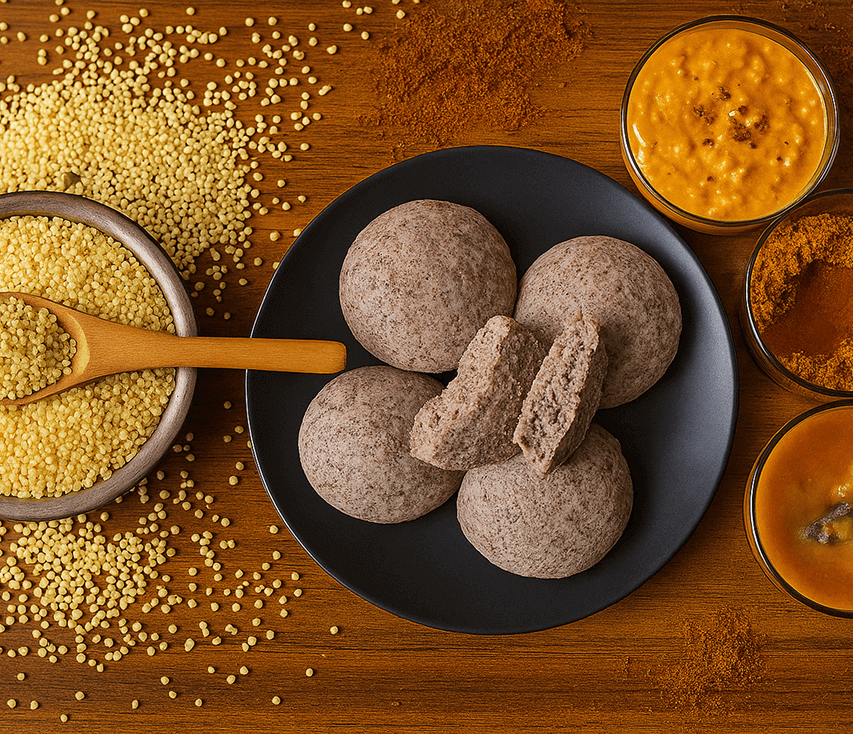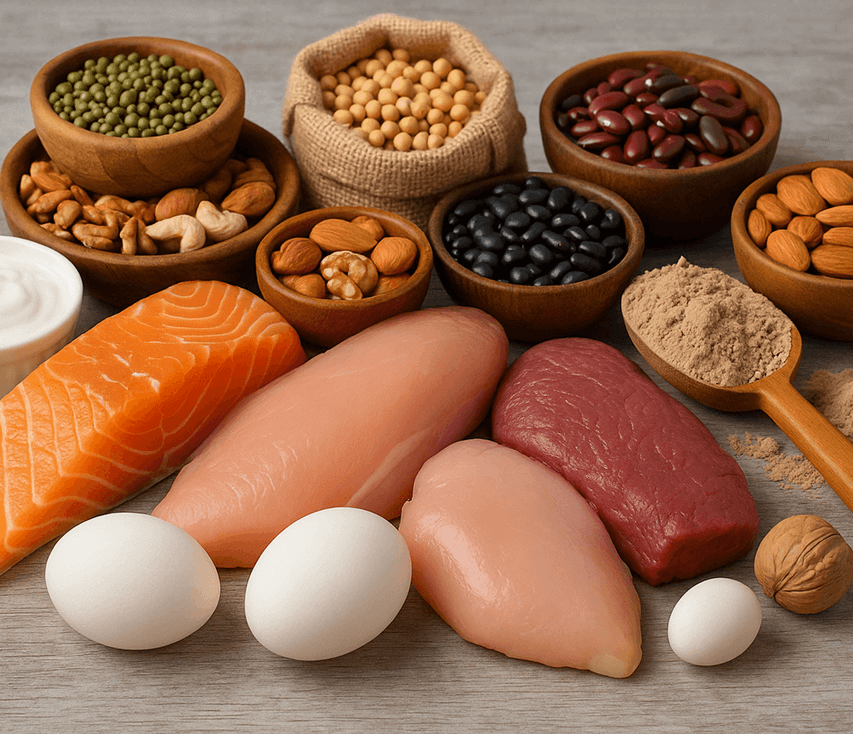In recent years, there has been a growing awareness of the importance of integrating ancient grains into modern diets. One such superfood that is making a powerful comeback in Indian kitchens is millet. Long known for its high nutritional value and versatility, millets were once a staple in Indian households but were gradually replaced by refined grains such as rice and wheat. Today, thanks to the renewed focus on traditional foods and sustainable farming, millets are reclaiming their rightful place as a nutritional powerhouse.
The Indian government played a pivotal role in this revival with the Millet Movement launched in 2019 by Prime Minister Narendra Modi, which aimed to encourage the consumption and cultivation of millets. This movement has not only raised awareness about the importance of these ancient grains but has also led to their inclusion in global food systems as a sustainable solution for nutrition and environmental preservation.
What Are Millets?
Millets are small-seeded grains that belong to the grass family. They have been cultivated for thousands of years and were a significant part of the diet in many ancient civilizations, particularly in India. These grains are naturally gluten-free, making them an excellent choice for individuals with gluten sensitivities or digestive issues. Millets include varieties such as jowar (sorghum), bajra (pearl millet), ragi (finger millet), kodra (kodo millet), jhangora/sanwa (barnyard millet), kagni (foxtail millet), kutki (little millet), chena (proso millet), rajgira (amaranth millet), and kuttu (buckwheat).
While these grains were staples for centuries, their popularity waned over time with the advent of the Green Revolution in the 1950s, which pushed for the mass production and consumption of rice and wheat. However, with the global shift towards healthier, plant-based diets and sustainable food systems, millets are now being rediscovered for their exceptional nutritional profile.
Nutritional Benefits of Millets
Millets are packed with nutrients that make them a great addition to any diet. They are rich in essential vitamins and minerals, making them an excellent choice for boosting overall health.
- High in Protein: Millets are a great plant-based source of protein, essential for building and repairing tissues, supporting immune function, and maintaining muscle health. Protein-rich millets like jowar and bajra are ideal for vegetarians and vegans.
- Rich in Fiber: Millets are an excellent source of dietary fiber, which helps in digestion and maintaining a healthy gut. Fiber also aids in regulating blood sugar levels, making millets a great choice for diabetics. Additionally, fiber-rich foods help in weight management by keeping you fuller for longer.
- Packed with Essential Vitamins and Minerals: Millets contain a range of essential nutrients such as magnesium, phosphorus, iron, calcium, zinc, potassium, and B-vitamins. These nutrients play an important role in maintaining bone health, improving brain function, supporting the immune system, and keeping your heart healthy.
- Anti-inflammatory Properties: Many varieties of millets are naturally anti-inflammatory, making them ideal for reducing the risk of chronic diseases such as arthritis, cardiovascular diseases, and diabetes. Their anti-inflammatory properties also contribute to overall wellness by promoting healthy digestion and reducing gut irritation.
- Gluten-Free: Since millets do not contain gluten, they are an excellent alternative for people with celiac disease or gluten intolerance. By replacing wheat-based foods with millet alternatives, individuals with gluten sensitivities can enjoy a variety of dishes without the risk of digestive discomfort.
Health Benefits of Millets
Millets offer a wide range of health benefits, making them an ideal choice for a balanced and nutritious diet. Here are some key health benefits associated with consuming millets:
- Promote Healthy Digestion: Millets are rich in fiber, which supports healthy digestion by improving bowel regularity and preventing constipation. The fiber in millets also helps in maintaining a healthy gut microbiome, promoting the growth of beneficial bacteria that aid in digestion.
- Aid in Weight Management: The high fiber content in millets helps keep you fuller for longer, reducing the likelihood of overeating. Millets also have a low glycemic index, meaning they release sugar into the bloodstream slowly, which helps in controlling blood sugar levels and reducing cravings for unhealthy snacks.
- Support Heart Health: Millets are rich in heart-healthy nutrients such as magnesium, potassium, and fiber, which help in reducing blood pressure and cholesterol levels. Regular consumption of millets has been linked to a lower risk of heart disease, making them a great choice for individuals looking to improve cardiovascular health.
- Regulate Blood Sugar Levels: The high fiber and low glycemic index of millets make them ideal for people with diabetes or those looking to manage their blood sugar levels. Millets help in preventing spikes in blood glucose levels and improve insulin sensitivity, making them an excellent choice for diabetics.
- Strengthen Bone Health: Millets are rich in calcium, phosphorus, and magnesium, essential minerals for bone health. Regular consumption of millets can help prevent bone-related issues such as osteoporosis and maintain strong, healthy bones as you age.
- Improve Skin and Hair Health: The B-vitamins and minerals found in millets, such as zinc and iron, support healthy skin and hair. These nutrients promote collagen production, improve blood circulation, and provide nourishment to hair follicles, helping maintain healthy and glowing skin and strong hair.
Millets and the Environment
One of the most significant advantages of millets is their environmental sustainability. Unlike rice and wheat, which require large amounts of water and chemical fertilizers, millets are hardy crops that thrive in dry, arid conditions. They can grow in areas with low rainfall and minimal water resources, making them an ideal crop for regions facing water scarcity.
Millets are also more resistant to pests and diseases, reducing the need for chemical pesticides and fertilizers. This makes them an environmentally friendly choice for both farmers and consumers. In India, where regions like Rajasthan face extreme temperatures and water shortages, millets have remained a staple due to their resilience and ability to withstand harsh climatic conditions.
By shifting from water-intensive crops like rice and wheat to millets, we can reduce the environmental impact of agriculture and promote more sustainable farming practices. Millets also help improve soil health by reducing the need for chemical inputs, as they naturally enrich the soil with organic matter.
Millets in Modern Diets: How to Include Them
With the growing awareness of millets’ health benefits and sustainability, many people are looking for ways to incorporate them into their daily diets. Thankfully, millets are incredibly versatile and can be used in a variety of dishes, from savory meals to sweet treats.
- Millet-Based Rotis and Parathas: You can easily swap regular wheat flour with millet flour to make rotis and parathas. Jowar and bajra are commonly used to make these gluten-free flatbreads, which are perfect for anyone looking to reduce gluten intake.
- Millet Porridge: Start your day with a warm, nourishing bowl of millet porridge. You can prepare it with milk or plant-based alternatives, and add fruits, nuts, and seeds for added flavor and nutrition.
- Millet Biryanis and Pulaos: Swap rice with millet for a healthier and more nutritious version of biryanis and pulaos. Millet-based biryanis are just as flavorful and aromatic as their rice counterparts, and they offer additional health benefits.
- Millet Upma: Millets like rava (semolina) or samak (barnyard millet) can be used to make savory upma, a popular South Indian breakfast dish. The nutty flavor of millet adds a unique twist to this classic dish.
- Millet Snacks and Bakes: Millets can be used in a variety of baked goods, such as muffins, cakes, and cookies. They are also great for making crunchy snacks like millet chivda or millet-based granola bars.
- Millet Salads: Cooked millets can be used as a base for salads, paired with vegetables, herbs, and a light dressing. This makes for a nutritious, filling, and refreshing meal.
- Millet-Based Smoothies: You can blend cooked millets into smoothies for a boost of fiber and protein. Add fruits, greens, and nuts to create a nutrient-packed drink.
Conclusion
Millets are the superfood of the future, offering a perfect balance of nutrition, sustainability, and versatility. By embracing these ancient grains, we not only improve our health but also contribute to a more sustainable and resilient food system. With their high nutritional value, gluten-free nature, and environmental benefits, millets are the ideal grain for modern lifestyles. As the Millet Movement continues to grow and more people recognize the power of these grains, millets are set to reclaim their position as a dietary staple in India and around the world. So, why not make millets a part of your daily meals and experience the many benefits they have to offer?





